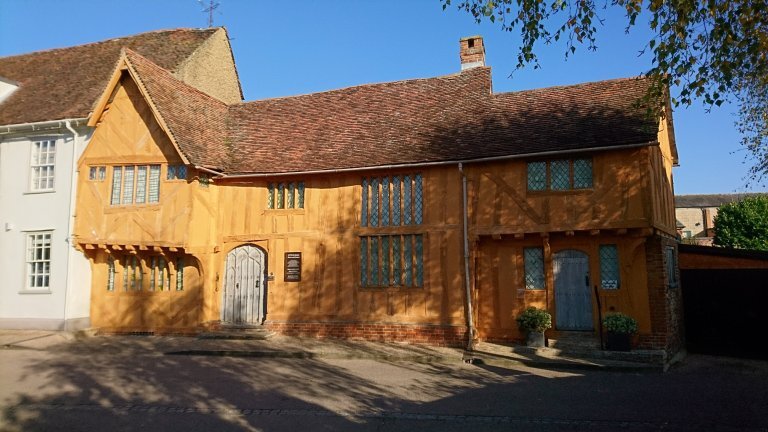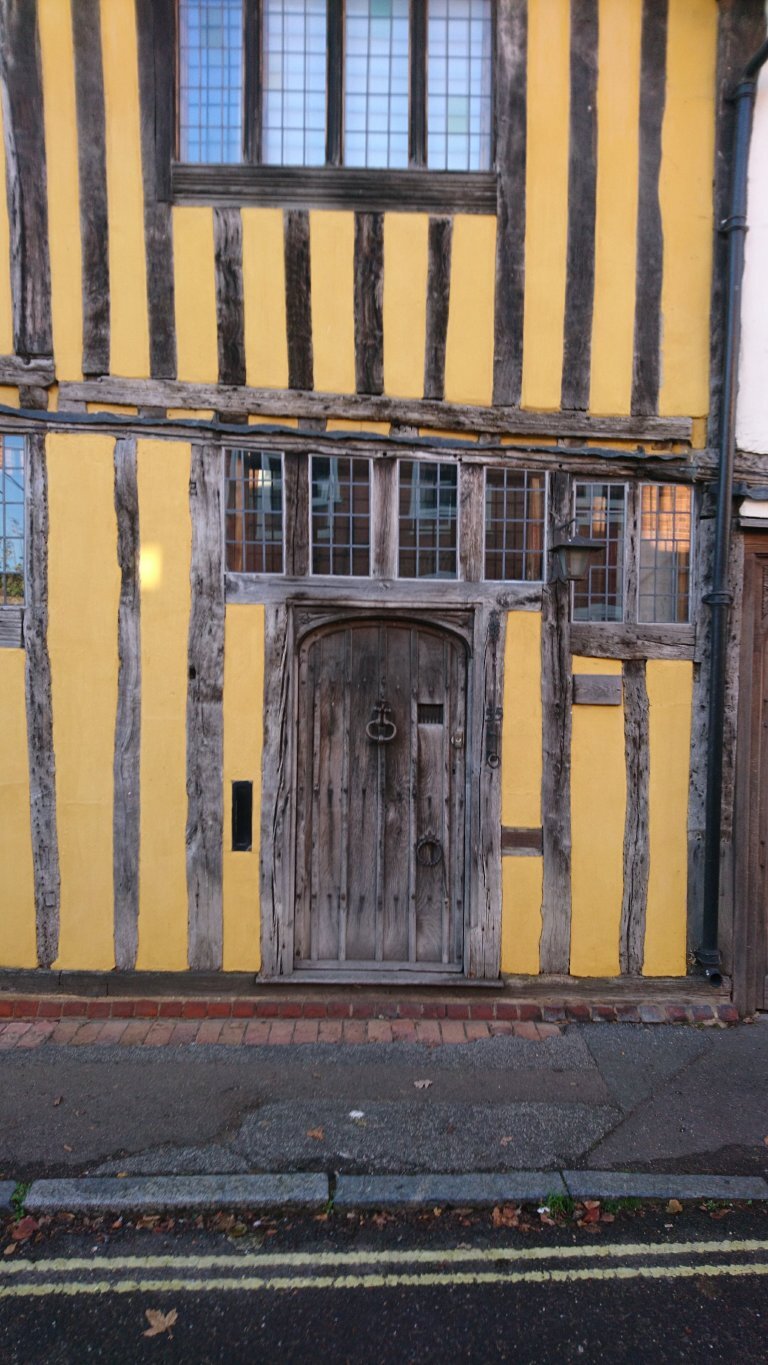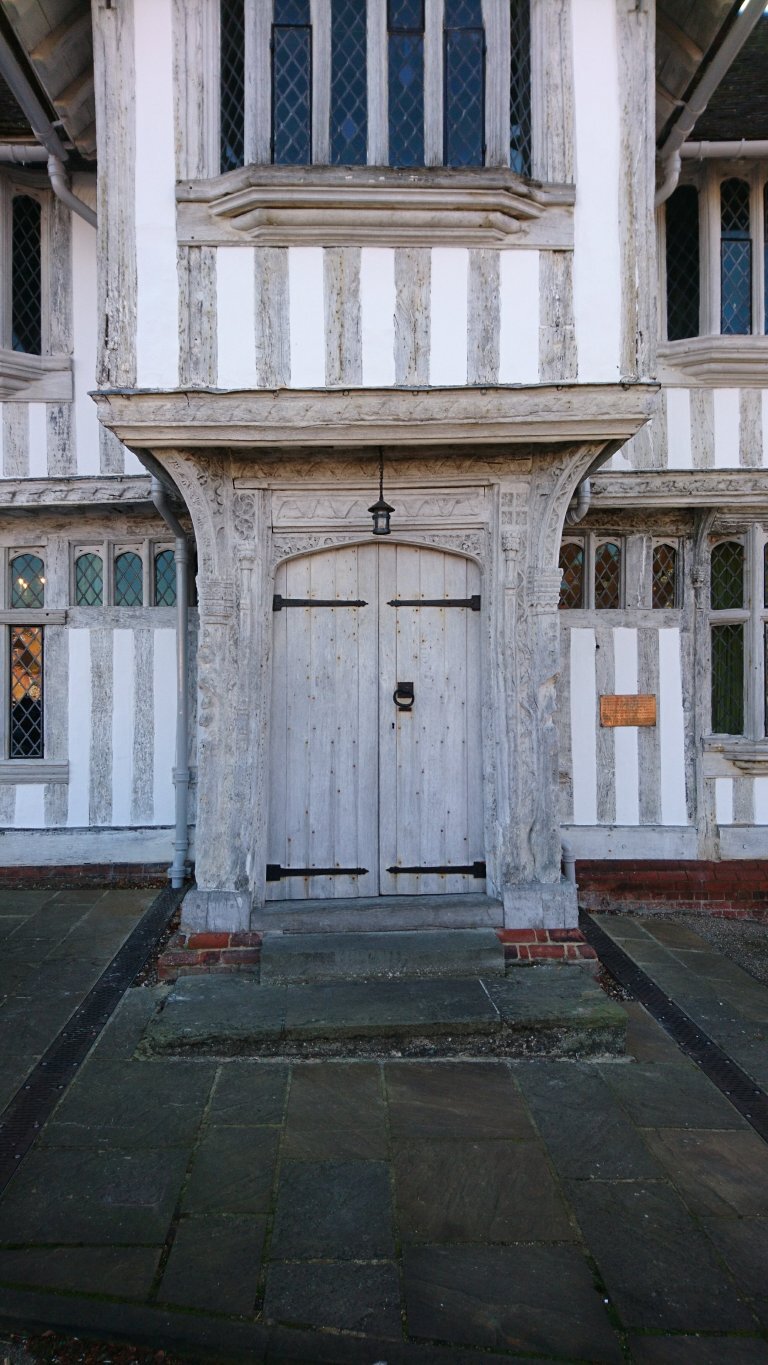Lessons From Lavenham
During a recent trip back to Suffolk I was able to spend a morning wandering the historic streets of Lavenham. Despite having grown up a stone’s throw away in Ipswich, it was not until more recently that I became aware of the historical significance of this small rural town. Blossoming as a result of the wool trade during the 15th and 16th centuries Lavenham became a major trading town and during Henry VIII reign was ranked fourteenth wealthiest town in Britain.
Close studded frames water street
However, around the turn of the 17th century there was a rapid change in the towns fortunes. After new weaving technologies arrived from Holland into nearby Colchester, the industries underpinning the towns economies collapsed and Lavenham was usurped as a manufacturing hub. Whilst catastrophic for the local population at the time, this sudden change is the reason that so many medieval timber framed building remain today.
Guildhall Front Door
Guildhall front door
Guildhall Carved Jetty
Guildhall Main Entrance
Water street
Where as in many other historic towns the buildings would have been adapted to the latest styles, with for example new georgian brick facades, in Lavenham the timber structures remained. Today, despite a population of under 2000 people , the village contains over 200 listed buildings, many of which are Grade I listing making them amongst the highest significance in the UK.
The village is centred around market place, which sits atop the largest hill in the area, and features the guildhall to the south side of the square, an imposing close studded timber structure with intricately carved beams and jettied bays to the upper floor.
The layout of the historic centre was interesting to observe. The market place, occupying the vista, would have formed the northern boundary of the settlement, with subsequent structures being built down the hill to the south towards and along the river.
A huge church, said to have the tallest tower of any parish church in the country, sits a short walk to the south west of the village and is visible from all around.
The beauty of the town is evidenced by the great many tourists that flock to the village. It’s picture postcard appearance is the archetypal image of what many foreign visitors conjure up when they imagine Britain. Yet this description belittles what is an astonishing collection of medieval buildings that not only demonstrate the craft and tradition of the period, but together provide an insight into life almost 700 years ago.
Tourism is clearly central to the local economy, with restaurants, pubs, cafes, art galleries and tourist centres making up the majority of commercial premises in the village.
Despite this I was made aware by local residents that the village plays an important role as a hub for the local farming community, providing a place to meet as well somewhere to purchase everyday goods. To this effect it was interesting to observe a great many new houses having been built to the north of the village, including a large council estate that was built in the 60’s, suggesting homes for workers servicing both the village and the more dominant farming industries in the surrounding vicinity.
I have often questioned the viability of tourism as a sustainable long term strategy to the development of a town or city. It appears to be a very superficial and volatile method to providing revenue and stability to a community – for example, will the same number of european travelers still choose to come across the channel if, following brexit, their automatic visas are revoked?
The key in Lavenham appears to be that this service based economy is subservient to the larger farming economies and therefore, as well as bringing diversification to the region, enables local resources such as pubs and post offices to be maintained. As the shift towards urbanisation continues, so does the pressure on the rural communities. Lavenham therefore appears to provide a useful case study for other such towns and villages to consider.
A significant factor in maintaining Lavenhams appeal is the protection afforded its buildings by their listed status. In this context few would question this decision. But it is worth asking the question as to whether this is always the case.
It is a criminal offence to alter a listed building without first seeking permission. This can be a long and arduous process and of course limits the extent of changes that can be made. In my case experience this can be complicated by over zealous conservation officers that treat a listed status as a barrier to any work being carried out to a building or its surroundings.
On many projects people face conservation deficits, a term identifying where the work required to a restore a building is greater than the value of the building itself. This often leaves places in a state of disrepair for many years, damage no the integrity of the build itself, and having a negative impact on the surrounding environment. This is often only overcome following investment of public funding to make up the short fall.
Historic buildings and environments are critical in telling the story of the development of our societies. They help provide a sense of place and identity. But this story is an ongoing one and, particularly in urban landscapes where the pressure for space increases, our development should not be hamstrung by buildings wrapped up and sealed off like museum pieces.
Instead our historic buildings should be a driver for development, informing our buildings, and helping to create diverse culturally rich spaces that impact the growth of our towns and cities in a positive way. For this to happen, architects and planners need to engage in dialogue on a project specific basis about what is significant about the building or place in question, not give generic fixed instructions as so often appear to be delivered. Lavenham then stands as an example of the need for diversification, and provides a useful standpoint from which to consider longer term development of our built environment.
https://en.m.wikipedia.org/wiki/Lavenham
https://www.britishlistedbuildings.co.uk/england/lavenham-babergh-suffolk#.WgWAInqnyhA
https://www.tripsavvy.com/lavenham-medieval-wool-town-1661370
https://historicengland.org.uk/advice/your-home/owning-historic-property/listed-building/









